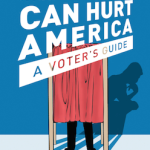Who pays for the uninsured, and how much?
 According to a 2009 US Census Report, 50.7 Million People are uninsured in the United States. That is 16.7% of the population. Or one of every six people. You might be surprised who is uninsured.
According to a 2009 US Census Report, 50.7 Million People are uninsured in the United States. That is 16.7% of the population. Or one of every six people. You might be surprised who is uninsured.
The cost of health care for the uninsured is paid for by the government and by increased costs to everybody else. Both of these costs are passed on to us in taxes, premiums, and co-pays. We all pay for the uninsured!
Families USA reports health insurance premiums increased in 2010 to pay for the health care costs of the uninsured. Families pay an extra $1,502 per year, and individuals pay an extra $532 per year. This does not include additional government expenditures paid by Medicare, Medicaid, tax incentives, and other government programs, which we also pay for in taxes. The report estimates the cost of the uninsured will top $60 Billion in 2010.
The uninsured use the emergency room for the majority of their medical treatment. In one county in Texas nine people accounted for 2,678 visits over a six year period, costing an estimated $3 Million dollars. And there are 50.7 Million uninsured people in America.

The US Centers for Disease Control reports that people without insurance account for 16% or 1 in every 6 emergency room visits. The uninsured also had the highest incidence of non-urgent care in the emergency room, at 19% of all uninsured visits. These expensive emergency room visits, estimated to cost around $1,000 each, are much more expensive than regular preventive health care.
One study by a health economist at Johns Hopkins Bloomberg School of Public Health, shows that uninsured patients pay 2.49 times more for the same procedures at a public hospital, than those covered by private health insurance. The ratio was even higher at for-profit hospitals charging 4.10 times more for the same procedures. The uninsured paid 3.07 times more than the Medicare rates paid to Hospitals.
Allowing minor medical conditions to go untreated or preventative medicine to be ignored will only increase the cost of health care in later years of life. Immunizations, examinations, and keeping people healthy is much cheaper than allowing problems to fester and later become much more expensive medical emergencies. When people become very sick and can’t keep a job, or reach the age of 65 years, they are covered under Medicare or Medicaid. Later, more expensive years of life that will be covered by government funding and our tax dollars.
Health care costs for the uninsured are paid for in higher costs, higher premiums, and government programs paid for with tax dollars. We already pay for the uninsured. The question is, how do we reduce health care costs we already pay for? We reduce costs with preventive medicine and keeping Americans healthy.
This article is an excerpt of Eric Wilson’s groundbreaking new book, What You Don’t Know Can Hurt America: A Voter’s Guide.
Scott Cooney
Scott Cooney (twitter: scottcooney) is an adjunct professor of Sustainability in the MBA program at the University of Hawai'i, green business startup coach, author of Build a Green Small Business: Profitable Ways to Become an Ecopreneur (McGraw-Hill), and developer of the sustainability board game GBO Hawai'i. Scott has started, grown and sold two mission-driven businesses, failed miserably at a third, and is currently in his fourth. Scott's current company has three divisions: a sustainability blog network that includes the world's biggest clean energy website and reached over 5 million readers in December 2013 alone; Pono Home, a turnkey and franchiseable green home consulting service that won entrance into the clean tech incubator known as Energy Excelerator; and Cost of Solar, a solar lead generation service to connect interested homeowners and solar contractors. In his spare time, Scott surfs, plays ultimate frisbee and enjoys a good, long bike ride. Find Scott on Google Plus
One Response to Who pays for the uninsured, and how much?
Leave a Reply to The Individual Mandate | Talking Philosophy Cancel reply

Get your signed copy of
Build a Green Small Business (McGraw-Hill)!
Or...talk with the author!
Click here to schedule an hour consultation.
 Green franchise opportunities:
Other green business ideas
Green franchise opportunities:
Other green business ideas
- Healthy Fast Food
- Farmer's Market
- Personal Trainer & Diet Planner
- Juice Bar and Smoothie Café
- Green Building Materials Store
- Permaculture and Urban Farming
- Edible and Organic Floristry
- Energy Efficiency Auditing
- Ecotourism and Sustainable Travel Planner
- Sustainable Coffee House
- Consignment Shop for Kids Clothing & Toys
- Natural Foods Co-op
- Sustainable Food Prep and Cooking Instruction
- Food Plant Nursery
- Mesh Network Telephone and Internet Company
- Drive-thru Coffee Stand & Espresso Shop
- Eco-Friendly House Cleaning Service
- Organic Backyard Garden Landscape Design
- Green Bed and Breakfast (B&B)
- Sustainable Mobile Food Vendor
- Biodiesel Cooperative
- Eco Friendly Pool and Spa Cleaning
- Green Wedding and Sustainable Event Planner
- Organic Farm
- Gift Basket Service
- Pedicab Company
- Used Books Vending Machines
- Organic Day Spa
- Restaurant Food Delivery Service
- Used Bicycle Retailer
- Landscape Maintenance in Arid climates
- Organic Food Delivery Service
- Outdoor Gear Consignment Shop
- Eco Concierge Service and Relocation Specialist
- Organic Community Supported Agriculture
- Sustainable Property Management
- Residential Solar





[…] Obviously enough, when a hospital provides “free” medical care to the uninsured, it still must be paid for. After all, medical personnel do not work for free nor do the supplies and equipment needed for treatment come free. While hospitals do try to collect from the uninsured patients, this often does not cover the bill. After all, most people who are uninsured are without insurance because they cannot afford it rather than as a matter of choosing to forgo it. As such, the costs must be passed on to those who have insurance as well as on to the state. It is estimated that covering the bills of the uninsured adds $1500 to a family’s insurance pr…. […]